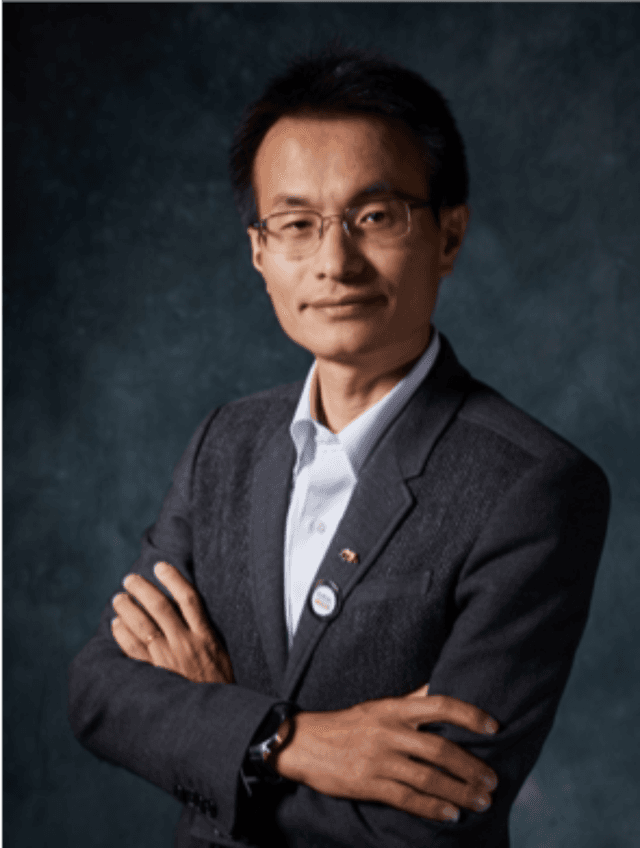New Director Assumes Helm of Kavli ENSI

Effective January 1, 2019, Peidong Yang assumes the role of Director of the Kavli Energy NanoScience Institute (ENSI). Yang is a Professor of Chemistry and the S. K. and Angela Chan Distinguished Chair Professor in Energy at the University of California, Berkeley. He is also a senior faculty scientist in the Materials and Chemical Sciences Division at the Lawrence Berkeley National Laboratory. He is a member of both the National Academy of Sciences and the American Academy of Arts and Sciences. He is also the director of the California Research Alliance by BASF.
The Kavli Energy NanoScience Institute (Kavli ENSI) at the University of California, Berkeley and the Lawrence Berkeley National Laboratory – leaders in energy research and the measurement and manipulation of matter at the nanoscale – is dedicated to studying how nature manages energy at the nanoscale and to developing entirely new ways to capture, store, and harness energy for the world’s growing population.

“Peidong is a pioneer in nanomaterials and energy related science,” said Kevin Moses, Vice President of Science Programs at The Kavli Foundation. “The Kavli Foundation looks forward to many years of continued excellence in basic nanoscience research at Kavli ENSI and is delighted that Peidong will lead the institute’s impressive membership of world-class scientists.”
“Peidong Yang has been instrumental to the success of the Kavli ENSI since its inception,” said UC Berkeley Vice Chancellor for Research Randy Katz. “A world-class scientist with a prominent international profile, he has all the attributes of an outstanding leader and will be an excellent successor to Paul Alivisatos. I am thrilled that Peidong has agreed to lead the Kavli ENSI.”
Prof. Yang is known particularly for his work on semiconductor nanowires and their photonic and energy applications including artificial photosynthesis. He has made significant contributions in the solar energy conversion area by introducing for the first time the idea of nanowire-based dye-sensitized solar cells. His group has devoted significanteffort to systematically examine the photoelectrochemical properties of the high surface-area semiconductor nanowire arrays. They have developed semiconductor nanostructures with complex compositions and heterojunctions in their search for better materials for artificial photosynthesis, a process of directly converting water and carbon dioxide into liquid fuels using sunlight.
In 2015, his team created a synthetic “leaf” that is a hybrid system of semiconducting nanowires and bacteria S. Ovata. The nanowires gather sunlight, and the bacteria trigger the use of carbon dioxide and water to complete the photosynthetic process and produce a targeted carbon-based chemical such as butanol. This is the first time that a fully integrated system was assembled to produce value-added chemicals directly and solely from CO2, H2O, and sunlight, and is widely considered one of the major breakthroughs in the field of artificial photosynthesis. This Photosynthetic Biohybrid System introduced from the Yang group combines the strengths of inorganic materials and biological catalysts. Such systems exploit semiconductor broadband light absorption to capture solar energy and subsequently transform it into valuable CO2-derived chemicals by taking advantage of the metabolic pathways in living organisms. Importantly, these systems now ascend to the high solar efficiencies of traditional semiconductor-based photovoltaic and photoelectrochemical devices and transfer over the captured sunlight to the robust and selective CO2-fixing microorganisms responsible for the biosynthesis of a diverse, nearly limitless, array of chemical products.
Dr. Yang received his B.A. in Chemistry from the University of Science and Technology in China in 1993. He then received his Ph.D. in Chemistry from Harvard University in 1997, and did his postdoctoral fellowship at the University of California, Santa Barbara. Soon after, he joined the faculty at the University of California, Berkeley. He is the recipient of the MacArthur Fellowship, E. O. Lawrence Award, ACS Nanoscience Award, MRS Medal, Baekeland Medal, Alfred P. Sloan research fellowship, the Arnold and Mabel Beckman Young Investigator Award, National Science Foundation Young Investigator Award, MRS Young Investigator Award, Julius Springer Prize for Applied Physics, ACS Pure Chemistry Award, and Alan T. Waterman Award. He is the 2014 Thomas Reuters Citation Laureate for Physics.